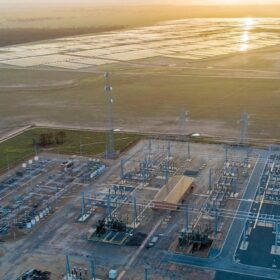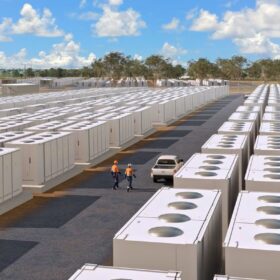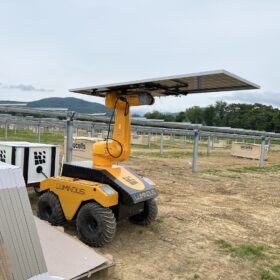Redflow chief technology officer Steven Hickey said the Extending Flow Battery Operation research project was identified to develop a deeper understanding of the electrolyte chemistry and electrode materials to further extend the operational characteristics of the Zinc Bromine Module (ZBM).
“The goal of our four-year project is extending flow battery operation and our first priority is to employ the University of Queensland’s (UQ) extensive facilities to perform advanced electrolyte analysis,” he said.
“In order for us to advance our competitive position in the market, we see significant opportunity to lower our levelised cost of storage (LCOS). Extending the operation of flow batteries is a key requirement for renewable energy strategy.”
Project collaborator from UQ’s Australian Institute for Bioengineering and Nanotechnology, Dr Bin Luo said the zinc-bromine flow battery was highly promising technology at the forefront of renewable energy solutions.
“We are excited to partner with Redflow and combine our expertise and strengths to solve what is ultimately a practical industrial problem,” he said. “Flow batteries have emerged as prime candidates in the development of large-scale grid-connected energy storage systems because they are more efficient, have a longer life cycle, and offer a lower cost for applications that require high energy-to-power ratios. This project will enhance the market competitiveness of Redflow’s products and extend their application in both residential energy storage and industries that require long-duration energy output.”
ARC Research Hub for Safe and Reliable Energy (SafeREnergy) was created with $5 million funding from the ARC and contributions from six Australian universities and ten industry partners. Led by Alfred Deakin Professor Ian Chen, SafeREnergy aims to address safety and reliability issues, and environmental impact of current energy storage and conversion technologies.
SafeREnergy brings together Australian universities and industry to deliver a new generation of technologies for storage from small-scale portable devices to large scale industrial applications, using recycled and natural materials, and eliminating the serious fire risk in current technologies. Outcomes include innovative integrated energy conversion and storage technologies and new energy materials and devices designed for different scale applications, benefiting the Australian economy, and potentially transforming the energy industry landscape.
Redflow CEO Tim Harris said: “The University of Queensland has educated and worked with outstanding people to create positive change for more than a century. We are proud to see Redflow’s battery technology at the forefront of industry innovation, and be able to partner with The University of Queensland, a top 50 university in the work in the QS World University Rankings, to support adoption of Redflow’s unique flow battery technology solution, increased use of renewable energy, and create a better world for all of us to live in.”






By submitting this form you agree to pv magazine using your data for the purposes of publishing your comment.
Your personal data will only be disclosed or otherwise transmitted to third parties for the purposes of spam filtering or if this is necessary for technical maintenance of the website. Any other transfer to third parties will not take place unless this is justified on the basis of applicable data protection regulations or if pv magazine is legally obliged to do so.
You may revoke this consent at any time with effect for the future, in which case your personal data will be deleted immediately. Otherwise, your data will be deleted if pv magazine has processed your request or the purpose of data storage is fulfilled.
Further information on data privacy can be found in our Data Protection Policy.